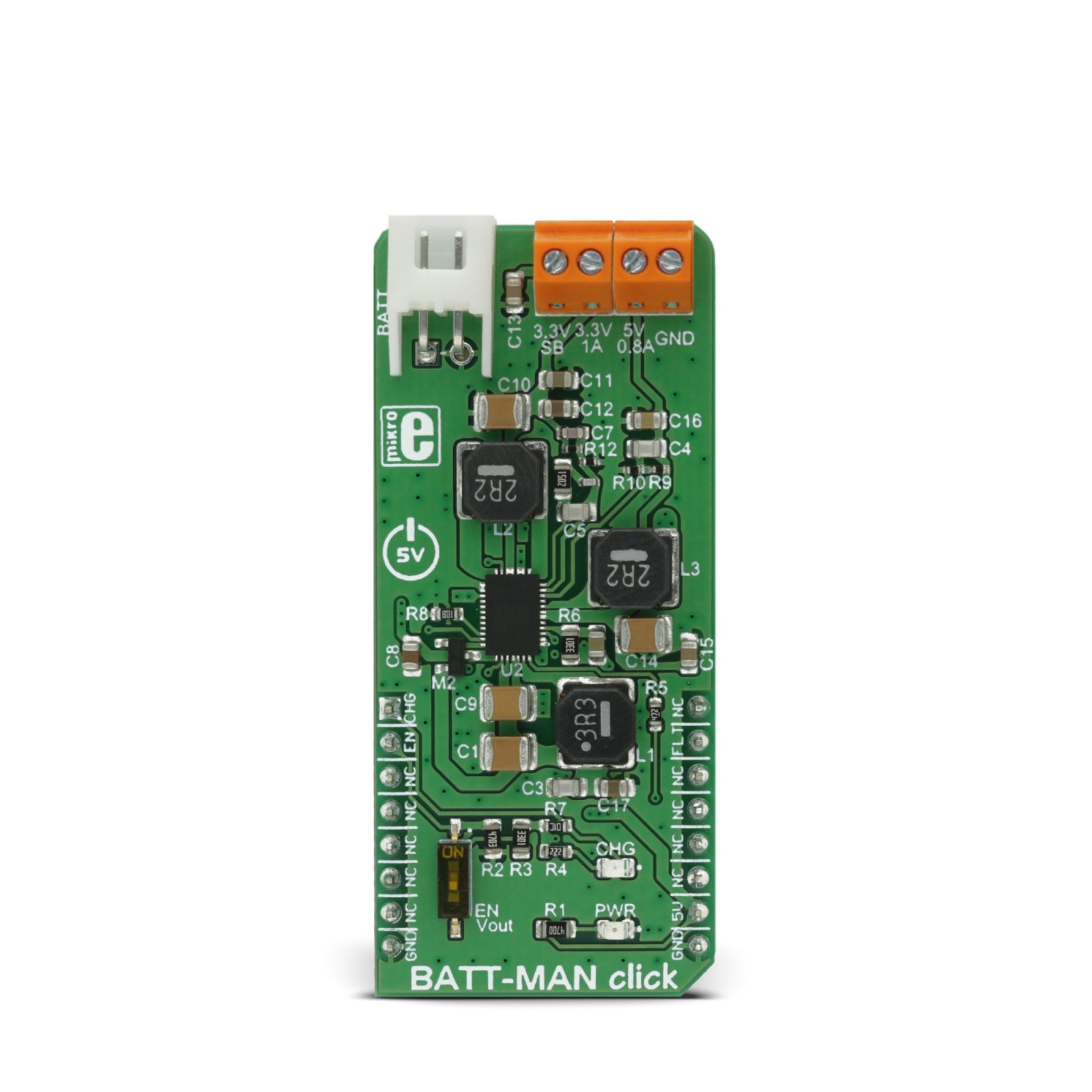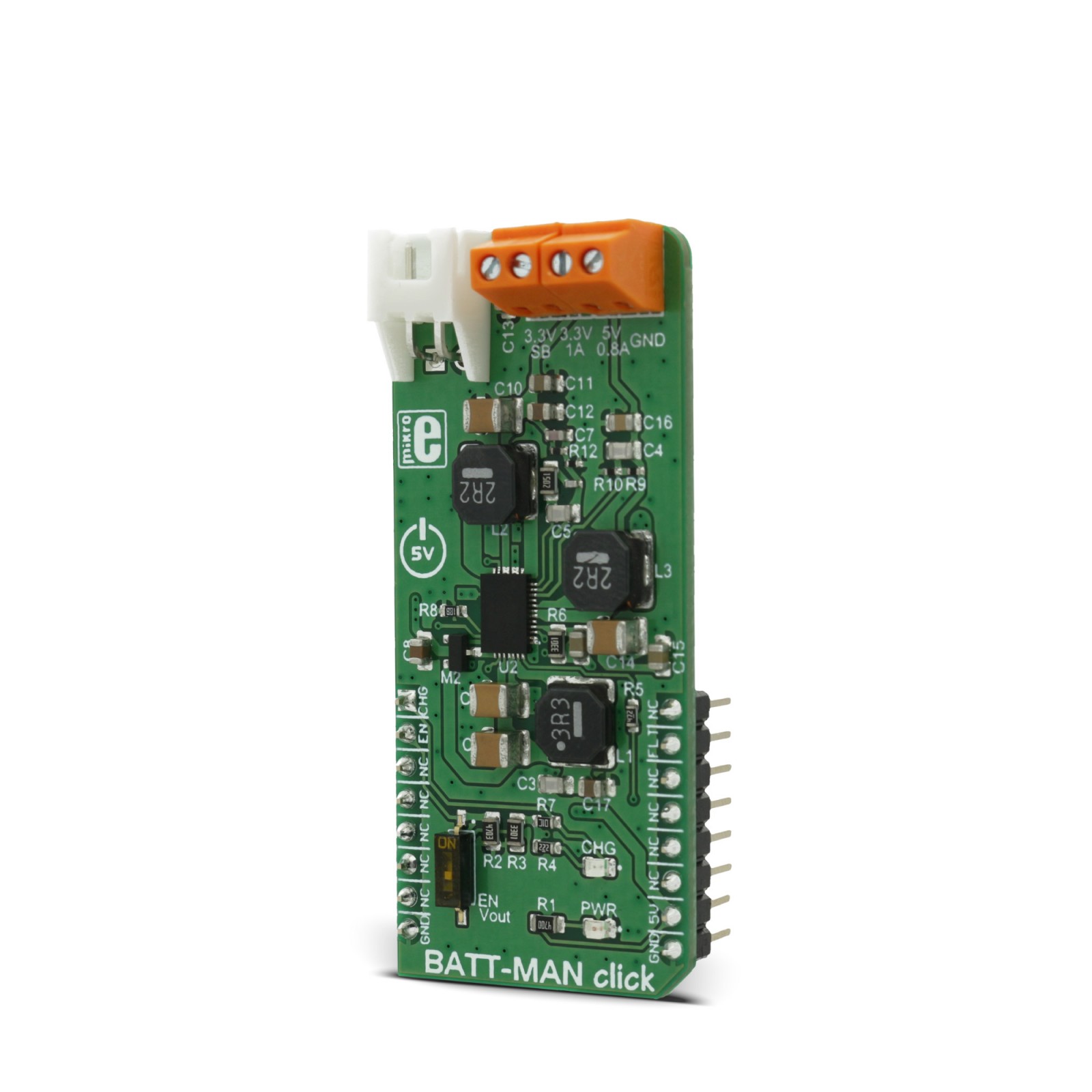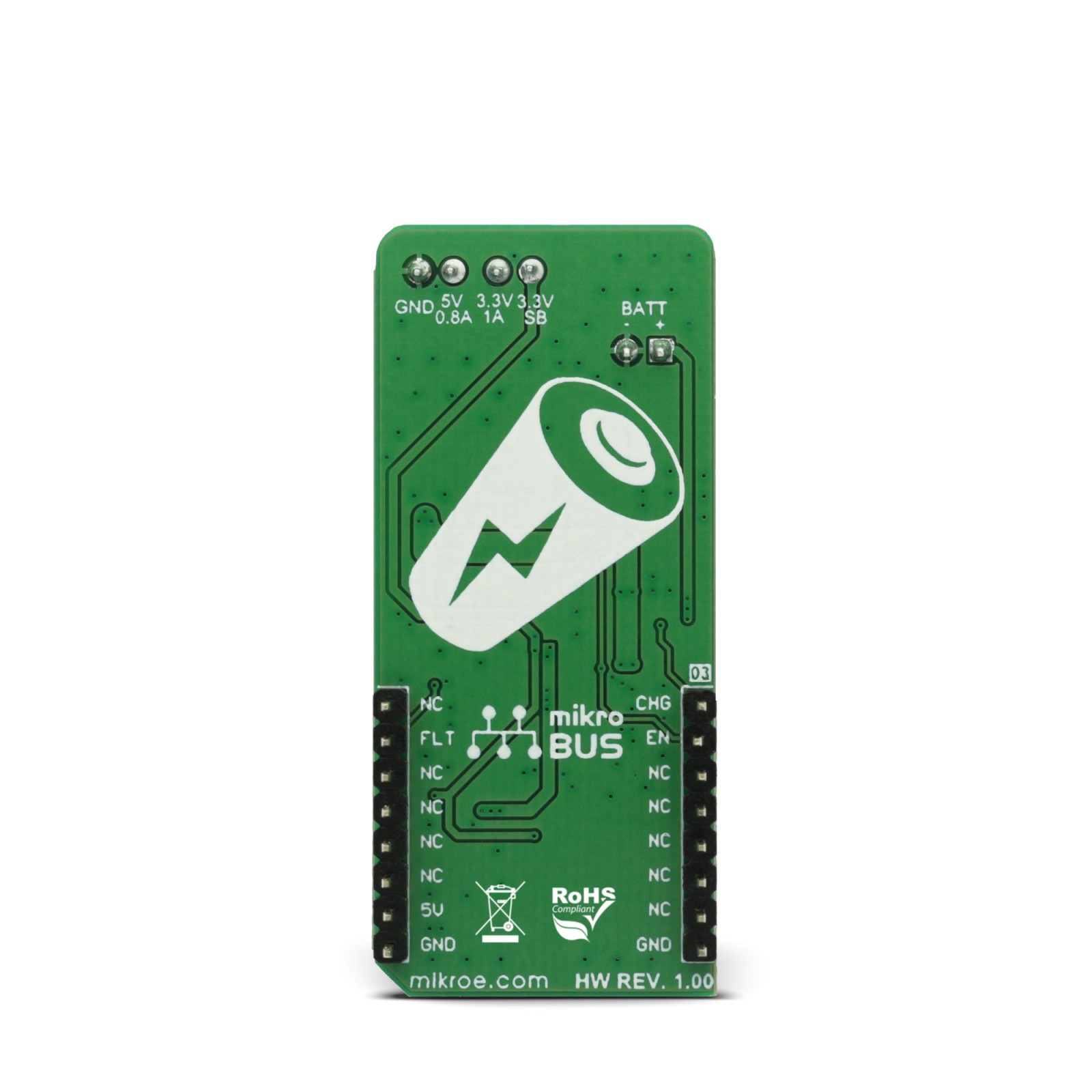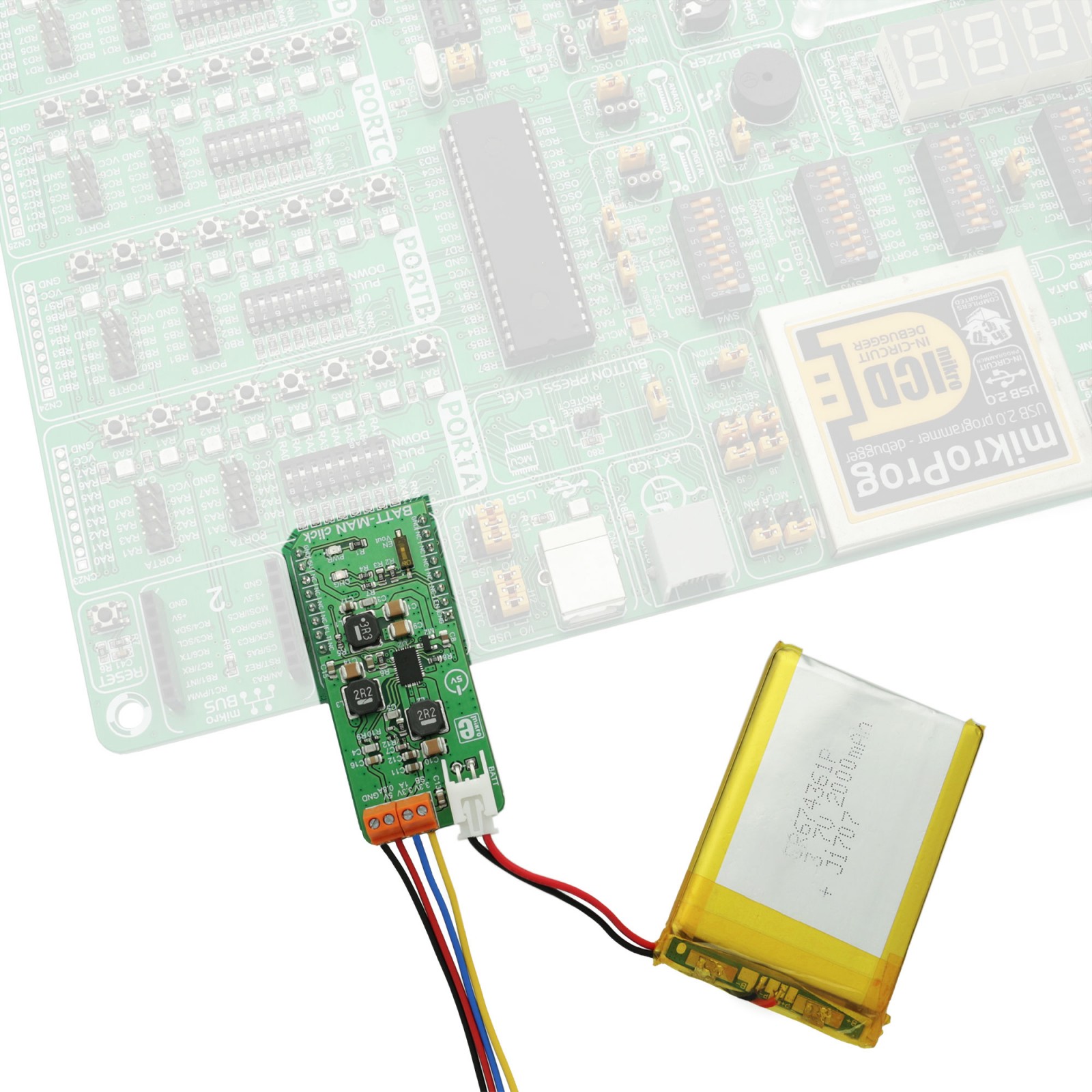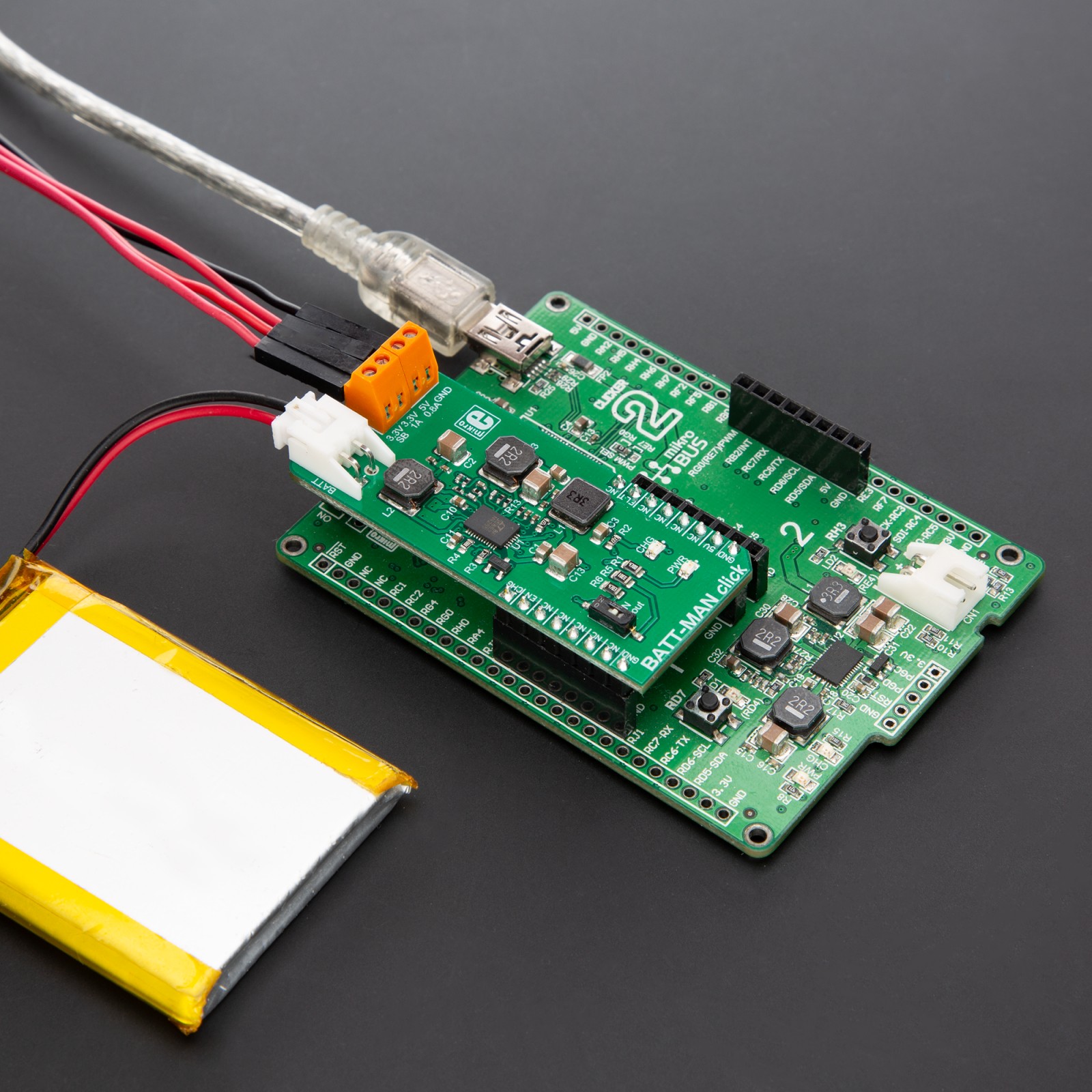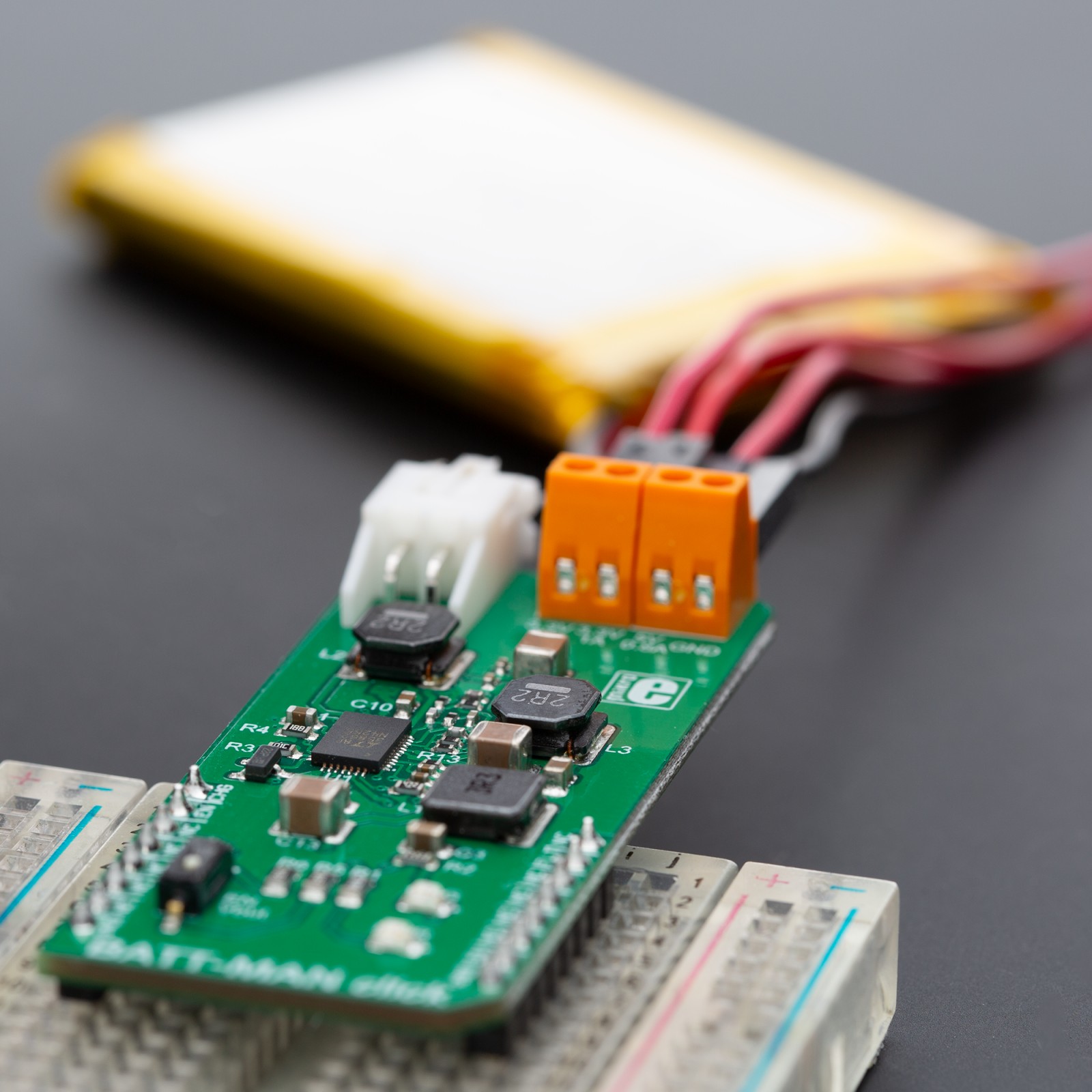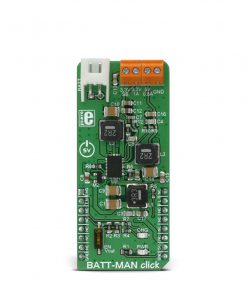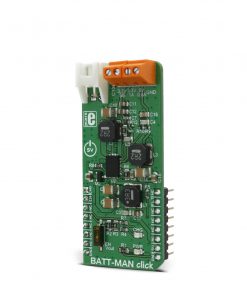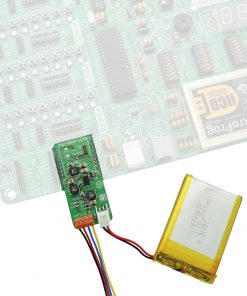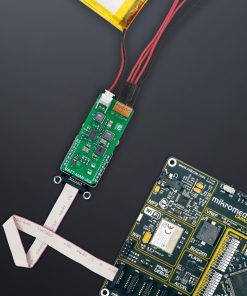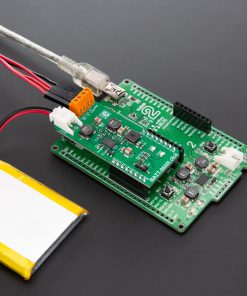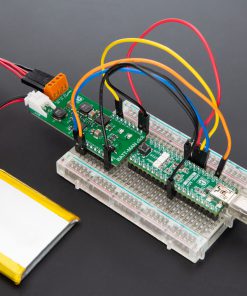BATT-MAN Click
R590.00 ex. VAT
BATT-MAN Click is a compact add-on board designed to deliver multiple regulated power outputs and intelligent LiPo battery charging in embedded applications. This board features the LTC3586, a high-efficiency power manager from Analog Devices integrating boost, buck-boost, and dual buck converters. It also features three independent power outputs: a low-current 3.3V LDO for light loads, a high-current 3.3V rail up to 1A, and a 5V output delivering up to 800mA – each accessible through onboard screw terminals. It includes a full-featured Li-Ion/Li-Po 3.7V battery charger with safety mechanisms, automatic recharge, and real-time status indicators. BATT-MAN Click is ideal for battery-powered embedded systems, portable instrumentation, and any application requiring reliable power distribution with integrated charging functionality.
BATT-MAN Click board™ is supported by a mikroSDK compliant library, which includes functions that simplify software development. This Click board™ comes as a fully tested product, ready to be used on a system equipped with the mikroBUS™ socket.
Stock: Lead-time applicable.
| 5+ | R560.50 |
| 10+ | R531.00 |
| 15+ | R501.50 |
| 20+ | R482.62 |

